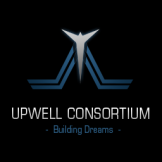
|
| Upwell |
|---|
| Mechanics |
| CCP's Helpdesk |
Upwell structure services
Upwell structures have wide variety of services available in them. Some services are available even in an unfitted structure but most services require a specific service module to be fitted.
Services always available:
- Tethering
- Hangar
- Ship fitting
- Insurance
- Repair shop
- Contracts, direct trading and deliveries
- Corporation offices
Services available as service modules. Thse services all require fuel to stay online.
- Market
- Clone bay
- Reprocessing
- Blueprint research
- Invention
- Manufacturing
- Capital ship manufacturing
- Supercapital ship manufacturing
- Booster reactions
- Composite reactions
- Hybrid reactions
- Reprocessing
- Moon mining
As these services require active module to stay online the service will go offline if there is not enough fuel. Oflline service will pause all manufacturing jobs, stop market activity and lock the clones. The materials and clones that were in are not destroyed but they can not be recovered unless the service is bought back online. The industry/research jobs can be still cancelled but this will not return any of the materials.
Out of these moon mining, reactions and (super)capital manufacturing services are the only ones with restrictions. All others can be installed in any upwell structure. Clone bay has additional limitations if fitted in wormhole space. You can not jump into a structure in wormhole space so the clone bay is limited to clone swapping.
Citadels
Citadels are upwell structures meant to be used as operation bases. They receive bonuses to combat rig effectiveness, market service fuel usage and cloning bay fuel usage. Citadels also have the shortest vulnurability durations and strongest combat options making them easier to defend.
The three citadels are Astrahus (medium), Fortizar (large) and Keepstar (extra large). They have exactly same structure bonuses so the difference is only how much things they can have fitted, how long vulnurabilities they have and how much of a status symbol they are.
There is also special Upwell Palatine Keepstar extra-large citadel. This citadel has ridiculously high material requirements and only one can be deployed at any given time. So far nobody has built one.
| Structure | Combat rig effectiveness | Citadel service module fuel usage | Extra | Vlnurability hours |
|---|---|---|---|---|
| Astrahus | 25%% | 25% | Only sub cap can dock | 3 |
| Astrahus | 25%% | 25% | Capital ships can dock. | 6 |
| Astrahus | 25%% | 25% | Supercapital ships can dock. Can use doomsday weapons. |
21 |
Refineries
Refineries are structures of choice for refining materials, reactions and moon mining. These are the only structures that can do reactions or moon mining and also receive innate bonuses to refining yelds and both reprocessing and refining service module fuel consumtion.
The two refineries are Athanor (medium) and Tatara (large). The athanor docking is limited to only subcapitals while Tatara also allows rorquals to dock.
| Structure | Role bonuses | Attributes | |||||
|---|---|---|---|---|---|---|---|
| Max docking | Extra | ||||||
| Athanor | 2% | 20% | 20 | no | Subcapital | ||
| Tatara | 4% | 25% | 25% | 20 | no | Subcapital | Rorqual can dock |
Moon mining
- Main article: Moon Mining
Moon mining can take place only at refineries anchored within 250 km of a mining beacon and fitted with a Standup Moon Drill I service module, which appears on the outside of the structure as a giant laser turret aimed at the mood. A single cycle takes 1 to 8 weeks depending on setup. The steps are as follows:
- Anchor the structure within 250 km of moon mining beacon. The beacon can be warped to from the right click menu in space. Only one refinery can be placed within range of the beacon.
- Set the length of the desired mining cycle. The amount of ore brought up with each cycle is directly proportional to the cycle time, so choose whatever works best for your schedule
- Fire the laser at the moon. This will break off a chunk of the moon and allow it to be pulled away from the surface.
- The mining turret's tractor beam will gradually pull the chunk away from the surface. It will continue to move into position until the time you specified in step 1.
- Fire the laser again, this time at the moon chunk. It will explode into a lot of little chunks, or asteroids.
- Send forth your
minionsminers to mine the asteroid belt. Have them bring it back to the refinery to turn it into precious moon goo. - While your miners are busy killing rocks, you can get started setting up the next cycle.
Savvy players may note that this results in much more risky gameplay than previous moon mining mechanics. The predictable timing of mining cycles combined with the high value of moon ores makes moon mining belts a prime target for pirates. Refinery operators should prepare a response against any attacks, as well as dealing with ninja miners attempting to steal moon ore.
Engineering complexes
Engineering complexes are the structures of choice for research and manufacturing. Research and manufacturing services installed in engineering complexes consume less fuel. In addition the engineering complexes have innate bonuses to manufacturing material usage, manufacturing and science job duartions and manufacturing and science job installation fees.
The three engineering complexes are Raitaru (medium), Azbel (large) and Sotiyo (extra-large). All three limit their docking to battleships and below so once a built capital ship comes out it can not go back in.
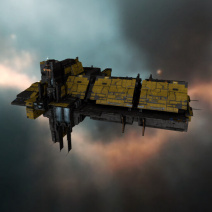 |
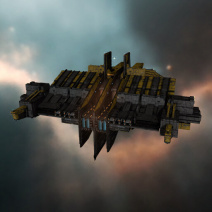 |
| Structure | Material requirement | Job duration | Job fefe | Engineering service fuel usage | Extra | Vlnurability hours |
|---|---|---|---|---|---|---|
| Raitaru | 1% | 15% | 3% | 25% | 9 | |
| Azbel | 1% | 20% | 4% | 25% | Can build capitals | 18 |
| Raitaru | 1% | 30% | 5% | 25% | Can build supercapitals. | 36 |
Structure mechanics
Tethering
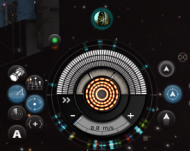
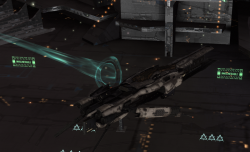
Tethering is a mechanic that allows pilots with docking permission to stay close to an upwell structure without being targetable and without taking damage from area of effect weapons. Note that you can still be bumbed until you are out of tethering range thus breaking the tether.
In addition to making your ship safe, tethering will also repair your ship shield, armor and hull while also repleshining your capacitor. Tethering will also repair damaged modules fitted on the ship and damaged drones in drone bay. Modules and drones in cargo or in space are unaffected.
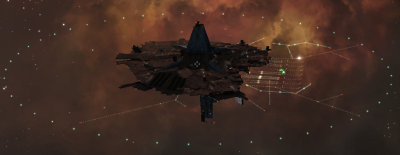
The following actions do not break tether:
- Move around in space as long as you remain close to the structure.
- Use the directional scanner.
- Launch probes, use the probe scanner and recall probes.
The following actions or conditions will break tether:
- Locking a target – will break immediately as lock starts, and won't refresh until target unlocked.
- Moving outside the tethering range (see range below).
- Activating specific modules, as below:
- Burst Jammer module.
- Command Burst module.
- Cynosural Field Generator.
- Siege module.
- Triage module.
The following actions or conditions will prevent tethering:
- Having an active weapon timer.
- If you're warp disrupted or scrambled so that the offensive strength overcomes your defensive warp core strength (see warp disruption for more information).
- If you do not have docking rights at the structure.
- A ship that has been ejected from and is unpiloted will not be tethered. Your pod however, will be immediately tethered.
While tethered you're unable to take certain actions:
- Cannot activate smartbombs.
- Cannot launch bombs from a bomb launcher.
Asset safety
Asset safety is a mean of mitigating the risk associated with storing items inside destructable structures, and serves as an intermediate "inventory" for player assets that were stored in a player-owned structure that has been destroyed or unanchored (subject to certain limitations). Items in Asset Safety do not exist in a physical location until delivered to a new location. Items placed in Asset Safety will be bundled in an Asset Safety container. In the case of Corporate Asset Safety, the Asset Safety wrap will preserve any corporate hangar organization.
Asset Safety is available in all Upwell Structures (such as Citadels and Engineering Complexes), but not other player-owned structures, such as player-owned starbases.
Asset Safety exists on both a personal and corporate level, though it functions similarly in either case. Once Asset Safety has been activated, regardless of method, it cannot be reversed, and items must then be delivered according to normal Asset Safety restrictions.
Asset Safety is activated whenever
- An Upwell structure is destroyed or unanchored, or
- A corporate office is un-rented, or
- A player manually activates it. You may do this by right clicking a structure heading in the Personal Assets window. But note: you must move all items from the Upwell at the same time using this command, which is labelled "Move all items to asset safety".
In the case of Corporate Asset Safety, only Directors or a CEO may activate Asset Safety for items in corporate hangars.
Items in Personal Asset Safety will appear in the player's "Assets" window, under the "Safety" tab.
Items in Corporate Asset Safety will appear in the corporation's "Assets" window, under the "Safety" tab.
There are then two ways of recovering the items:
- After 5 days, the player/corporation can choose to have their assets delivered to an outpost, NPC station, or Citadel in the same system where the assets were originally located. This option is free.
- After an additional 20 days (i.e. if the first option is not used), the assets will be automatically delivered to the nearest (measured in AU) NPC station, and the player/corporation must pay 15% of the assets' value to retrieve them from Asset Safety.
Delivery rules
If assets are not moved to a station, outpost, or Citadel in the same system, items in Asset Safety will be moved according to the following guidelines:
- From null security space: to the nearest low security station, by AU.
- From low security space: to the nearest low security station, by AU.
- From high security space: to the nearest high security station, by AU.
Wormhole systems
While Asset Safety technically exists in wormhole systems, in practice it merely causes assets in wormhole structures to drop in large containers when their containing structures are destroyed. Unless such items are contained in password-protected containers, anyone may take any items from containers dropped by structures in wormhole space. Players may also launch assembled ships from these containers.
Finding structures
The Structure Browser is able to show you info on strctures in same system, same constellation or same region as where you are. It has information about what structures and stations are accessible and what services they offer. You can find the structure browser in the NeoCom under "Business" or by hitting the Esc-button and setting up a shortcut for it.
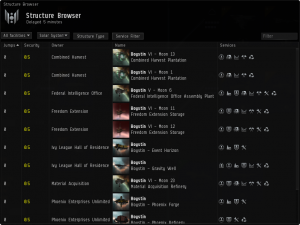
While you are in space your overview will show all citadels that you have docking rights for. Citadels that are on grid are shown even if no docking rights are available.
Citadels to which you don't have docking rights are visible in solar map in bracets.


